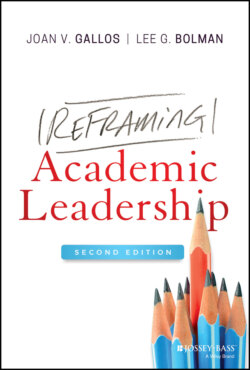Читать книгу Reframing Academic Leadership - Lee G. Bolman - Страница 39
Learn about Your Theories‐in‐Use
ОглавлениеThe Sarah and George case exemplifies a useful learning tool. Writing a two‐sided case in the same format that Sarah used is something you can do before or after an unusually tough situation.1 Take a piece of paper and divide it in half. Write a short dialogue that reflects what you said (or anticipate saying) and how others responded (or how you think they will) in the left‐hand column. Add what you were thinking but didn't (or wouldn't) say in the right. You may be surprised to see what you choose to say and not to say. Write these cases on different situations that you face over time, and you'll get new clarity about your strengths, comfort zones, and flat spots. Keep them as a record of your professional growth.
The two‐column case is one example of scenario building, discussed in Chapter 2. It's a low‐risk way to rehearse the future. You'll think more deeply about your intended strategies, how you want to talk with others, and the possible consequences. The case can also tell you how optimistic or pessimistic you are about the situation and reveal what you are reluctant to discuss or make public. Knowing that in advance can enable you to develop and practice new strategies – and build your confidence and communication skills. Remember: the undiscussable issues are often the keys for steering a difficult conversation in a positive direction.
If you use a case to reflect after the fact about what you might have done differently, enlist a trusted friend, coach, or colleague to help. The things we don't know about ourselves are hard for us to see without help from someone else. The writer of a personal case almost always struggles to see gaps and options that are transparent to others. Take heart! With practice and persistence, you'll improve the alignment of your actions with your purposes.
